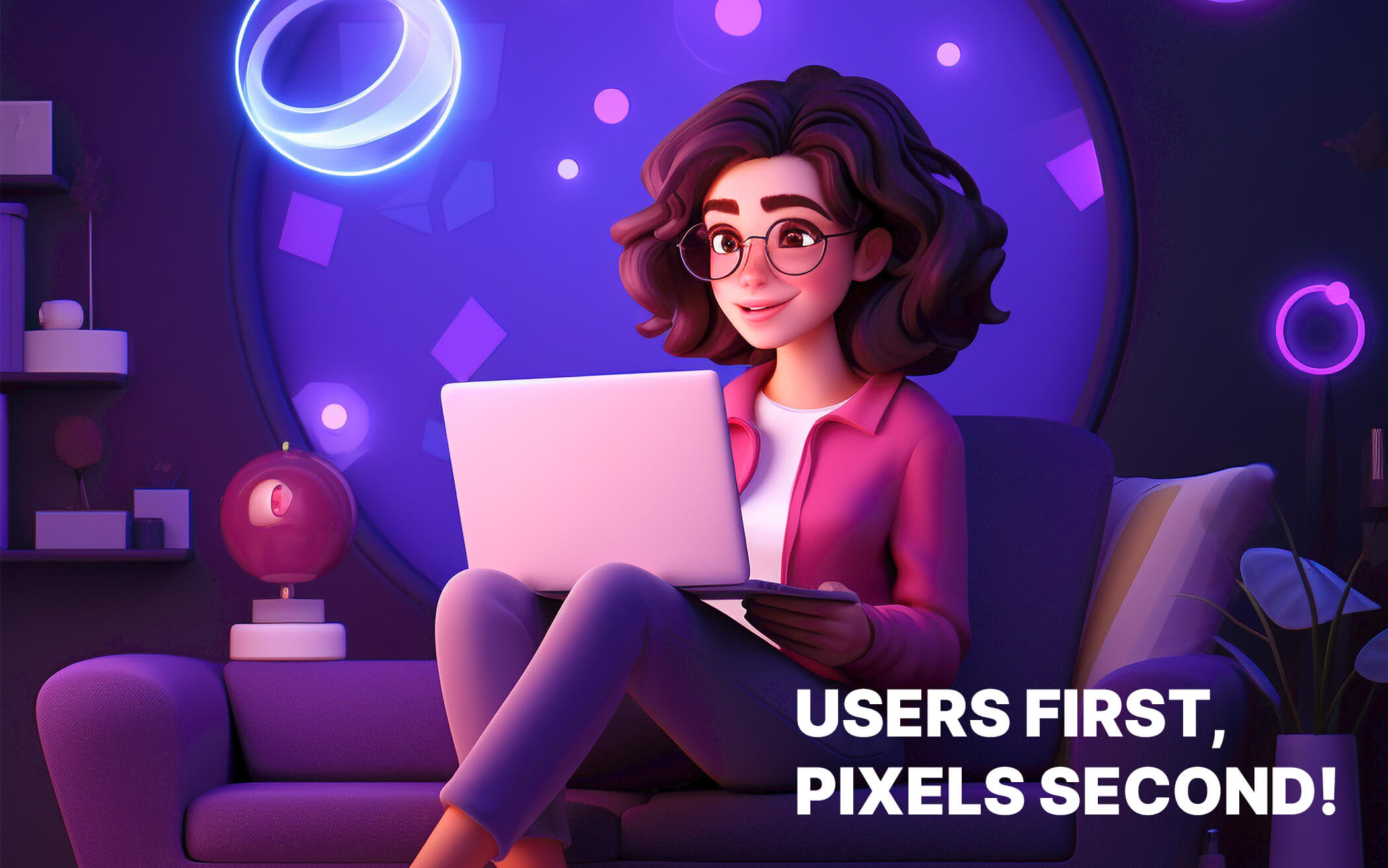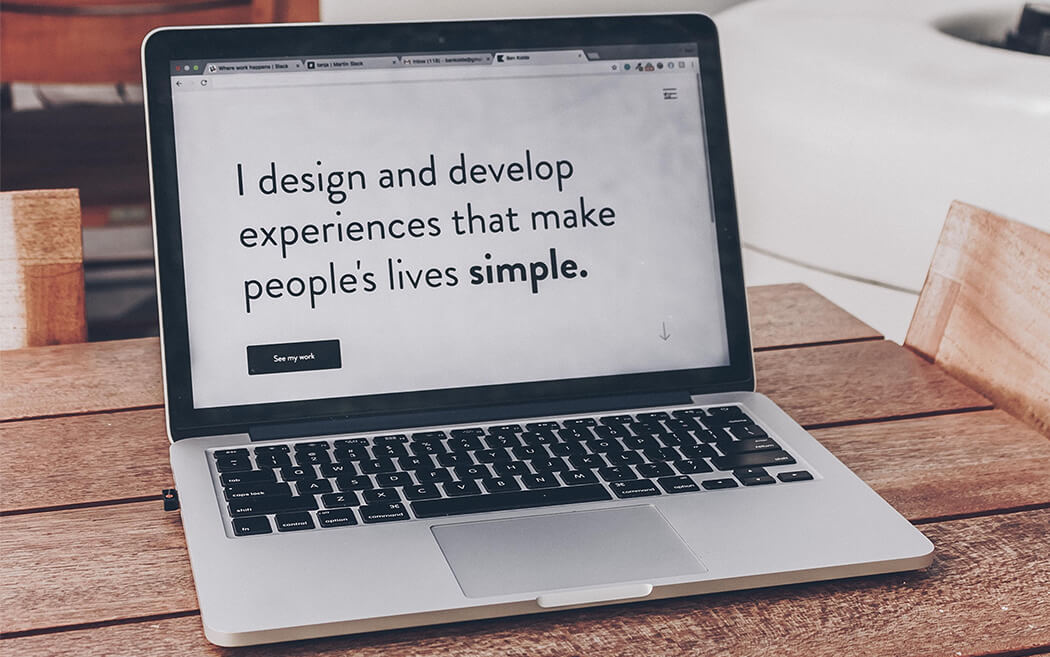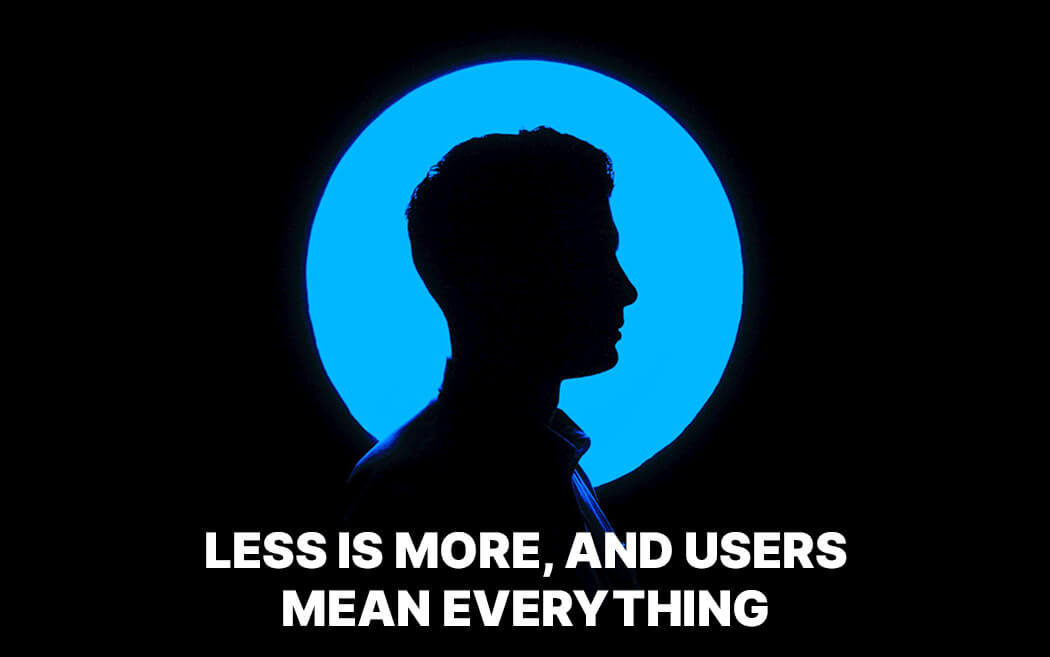Seeking a comprehensive guide on developing user-centric MVPs (minimum viable products) to enhance user experience (UX)? Look no further, as we’ll guide you through the steps of creating a minimum viable product with a user-centered design approach.
Ever wondered why users encounter a subpar experience with your MVP? One key reason might be the lack of user involvement in the design process or disregarding their feedback, leading to a frustrating user journey.
This is where user-centered design (UCD) steps in, enabling you to incorporate user feedback at each stage of the MVP design process, making it user-friendly. Let’s explore what user-centered design is, its key principles, and best practices for MVP design.
What is User-Centered Design
User-Centered Design (UCD) involves an iterative design approach where designers prioritize end-users’ needs and preferences, and encourage constant feedback in every phase of the design process. Designers identify how, where, or why the product is used by seeking user validation. The significant benefit of user-centered design is to create MVPs that are intuitive, accessible, and meet user expectations, enhancing overall user satisfaction. This methodology incorporates users through diverse research and design techniques, ensuring the creation of MVPs that are not only highly usable but also accessible to a broad audience.
The 4 Key Principles of User-Centered MVP Design

The UCD MVP design process revolves around four core principles to safeguard your projects against unintentional bias and oversight of user needs.
1. Empathy
Empathy in user-centered MVP design refers to the deep understanding and appreciation of users’ sentiments, perspectives, and experiences. Designers strive to empathize with the users to gain insights into their needs, challenges, and motivations. This emotional connection allows designers to create products that resonate with users on a human level, fostering a more intuitive and satisfying user experience.
2. Data-Driven Decisions
Users come from various backgrounds with different habits and preferences, and creating an MVP on assumptions without identifying user-specific needs cannot help you build a user-centric MVP design. Therefore, designers gain insight into user data, such as user behavior, needs, and preferences to ensure the development of tailor-made MVP solutions based on their unique preferences through real usage patterns.
3. User Participation at Each Stage of the MVP Design Process
Active user engagement and collaboration throughout the MVP design process encourage the team to seamlessly incorporate user feedback and iterate the product based on their evolving needs. In addition, it empowers the team to acquire profound insights into a user’s perception of the product and to identify potential enhancements in the design for an effortless user experience.
4. Align Business Goals with Users’ Needs
Identifying business goals and aligning them with your user needs drives both business growth and utmost user satisfaction. For instance, you’re an e-commerce business with a business goal of boosting sales while streamlining the checkout process helps you meet end-user needs, ultimately working on the user goal you achieve your business goal too. Therefore, striking the right balance ensures that the product is not only commercially viable but also provides genuine value to users.
How to Develop MVPs with a User-Centric Approach

The user-centric design approach is crucial for developing a user-friendly MVP that paves the way toward success. Unlock novel opportunities for impeccable user experience by developing a user-centric MVP design that fulfills each individual unique needs. Here’s a step-by-step guide on how to do it:
Understand User Needs
Conduct comprehensive user research to grasp your target audience’s needs and challenges. Identify their pain points, preferences, and behaviors through various methods such as interviews, focus groups, surveys, contextual inquiry, and field research. When engaging in user research, address key questions:
- Who are the primary users of the MVP?
- What are the users’ main goals or objectives when using the product?
- What challenges or pain points do users currently face?
- What kind of solution do they want?
- What features are exactly they are looking for within your MVP?
- What goal do they want to achieve through using your MVP?
- What are their needs, capabilities, and limitations?
- What are users’ preferences regarding the user interface and overall design aesthetics?
Getting answers to these questions will help you address your end-user challenges and, ultimately, offer user-centric MVP design to meet their unique needs.
Define Clear Objectives
The second step is to align MVP objectives with user needs and pain points identified in the research to avoid creating an MVP design based on assumptions. Additionally, prioritize features and functionality to craft a design that effectively addresses user challenges. Establish clear and measurable goals, shaping your MVP with a dual focus on user satisfaction and business objectives. Furthermore, delve into competitor research to gain valuable insights into the strategies they employ, allowing for a comprehensive understanding of the market landscape and potential areas for differentiation in your MVP development.
Rapid Prototyping
Visualize the user interface of your MVP through the creation of quick and low-fidelity prototypes. This is an essential part of UI/UX MVP designing because it will help you identify how interface elements and content will be placed within the design. It will give a brief idea of how the product will function to provide the best user experience. Using prototyping tools allows you to perform rapid iterations and gather early feedback. Involve potential users in the feedback loop to ensure the design meets their expectations.
Usability Testing
Conduct comprehensive usability testing by engaging real users to thoroughly assess the prototype’s effectiveness in real-world scenarios. Identify and scrutinize any potential usability issues, navigation challenges, emotional reactions, common errors, or points of confusion that users may encounter during their interaction with your prototype. This valuable feedback becomes the foundation for iterative MVP design improvements, fostering a commitment to continuous enhancement.
Agile Development
Develop your user-centered MVP with an agile methodology that facilitates iterative and incremental progress. Break down your MVP into small, manageable features or user stories. Establish clear milestones for each deliverable or sprint, aligning them strategically with both business objectives and user needs. This approach ensures a dynamic and responsive development process, enabling the continual enhancement of your MVP in alignment with evolving user expectations and overarching business goals.
Iterate and Refine
Leverage data analytics to track user interactions and behavior throughout the user-centered MVP journey. Utilize these data insights to refine and optimize the MVP continuously, ensuring it remains finely tuned to user expectations. Make informed decisions based on user engagement metrics and feedback. Embrace a mindset of continuous improvement and regular release of updates, where the MVP evolves in sync with user feedback, market dynamics, and evolving business goals.
Incorporating user-centered MVP design principles into MVP development enhances the probability of crafting a product that not only aligns with business goals but also adeptly addresses users’ fundamental needs and challenges, fostering a more impactful and rewarding user experience.
User-Centric MVP Design Best Practices

Creating a minimum viable product (MVP) with a user-centered design best practices is key to its success. Here are a few of the best practices to consider during the design process of MVP.
1. MVP Design Accessibility:
MVP design accessibility involves prioritizing inclusive design practices to ensure that the product is usable by as many people as possible, including those with disabilities. Adhering to established accessibility standards includes:
- Prioritizing keyboard navigation to help users with mobility challenges.
- Incorporating descriptive alt text for all images to make visual content accessible to users with visual impairments using screen readers.
- Maintaining sufficient color contrast between text and background to enhance readability.
- Adjusting font sizes that enable users to select font view sizes based on their viewing preferences.
Ensure comprehensive coverage of elements by employing an accessibility checklist throughout the design process. During testing, incorporate users with diverse accessibility requirements to guarantee inclusivity and identify potential barriers.
2. Principles of Visual Design:
Leverage visual design principles to guide users intuitively through each page. Consistent color schemes, clear typography, and well-defined visual hierarchy contribute to a visually appealing and user-friendly interface.
3. Cater MVP Design for Different Users:
Consider the diversity of your user base. Create user personas representing various demographics, behaviors, and preferences. Tailor the MVP design to accommodate different user needs, ensuring a personalized experience for a broader audience.
4. Tailor-Made UX:
Understand user’s browsing habits and patterns to create an MVP design layout that meets their needs. For instance, you get an insight into user’s browsing patterns for your e-commerce MVP. Now, leveraging those insights you create a site layout to support that specific browsing pattern, ensuring users receive a hassle-free searching and browsing experience tailored to their preferences.
Wrapping Up
Creating MVPs with user-centered design forms the foundation of impeccable user experience. It’s crucial to involve users during each cycle of the MVP design process to identify their unique needs and pain points, and seamlessly incorporate their feedback to create a tailored-made MVP that is adaptable according to their evolving requirements. By following the key principles and best practices of user-centered design, you will be able to pave the way toward a successful MVP with a delightful user experience.
 Web Applications
Build web apps using cutting-edge technology
Web Applications
Build web apps using cutting-edge technology
 Business Intelligence Apps
Empower your business with fast & actionable BI Apps
Business Intelligence Apps
Empower your business with fast & actionable BI Apps
 Mobile Applications
Build cross-platform apps for iOS and Android devices
Mobile Applications
Build cross-platform apps for iOS and Android devices
 Internet of Things Apps
Streamline your operations with cloud-based IoT apps
Internet of Things Apps
Streamline your operations with cloud-based IoT apps
 AI Products
Unlock the power of AI & ML with our expertise
AI Products
Unlock the power of AI & ML with our expertise
 Minimum Viable Product (MVP)
Mitigate risks & accelerate your project development
Minimum Viable Product (MVP)
Mitigate risks & accelerate your project development
 Enterprise Software
Build custom enterprise solutions for your business
Enterprise Software
Build custom enterprise solutions for your business
 Software as a Service (SaaS)
Scale your business with ease and cost-efficiency
Software as a Service (SaaS)
Scale your business with ease and cost-efficiency







